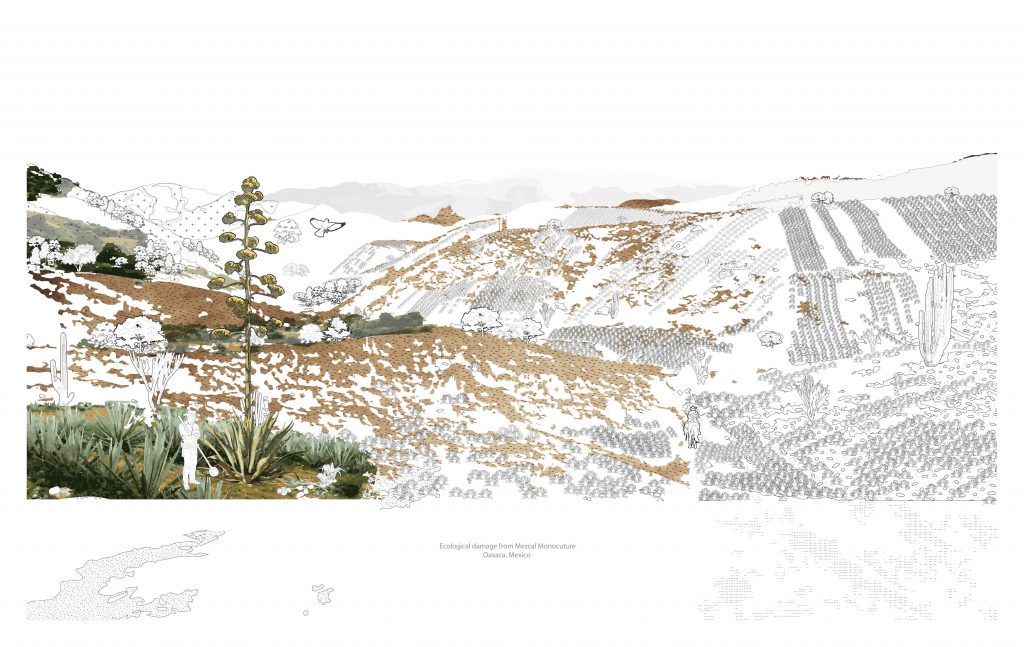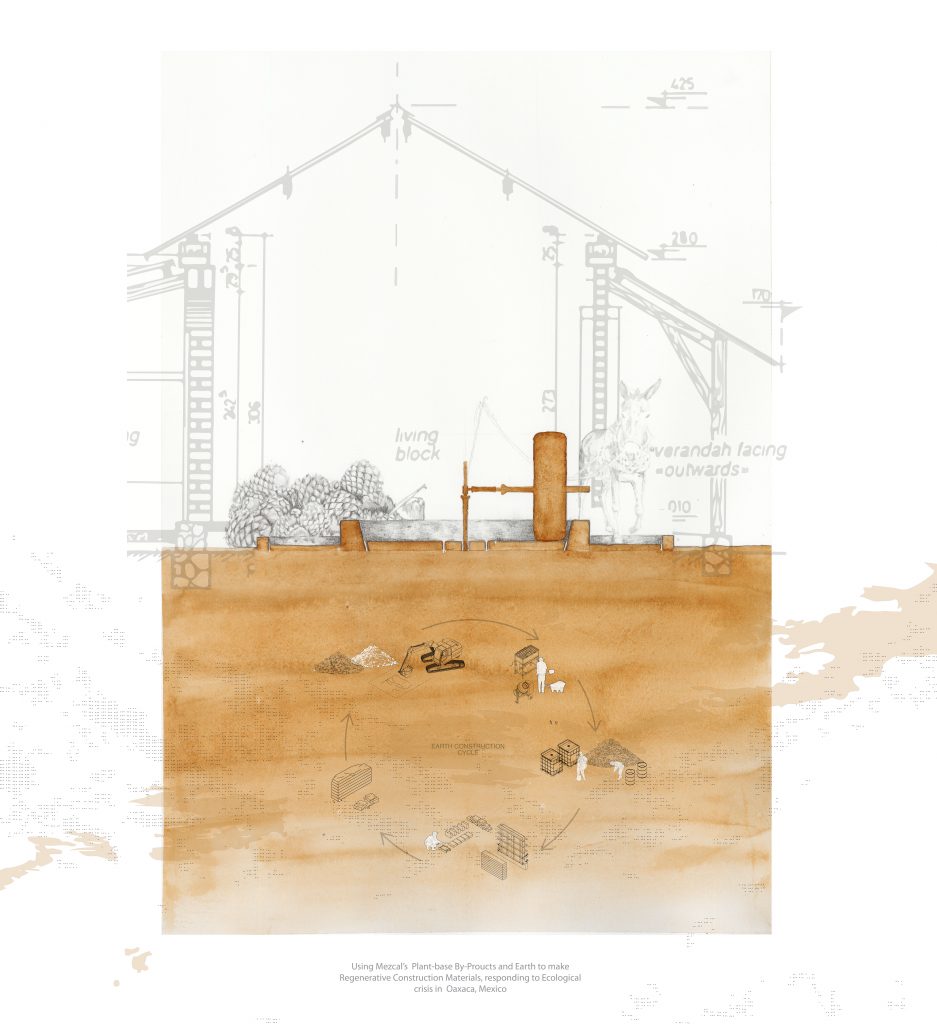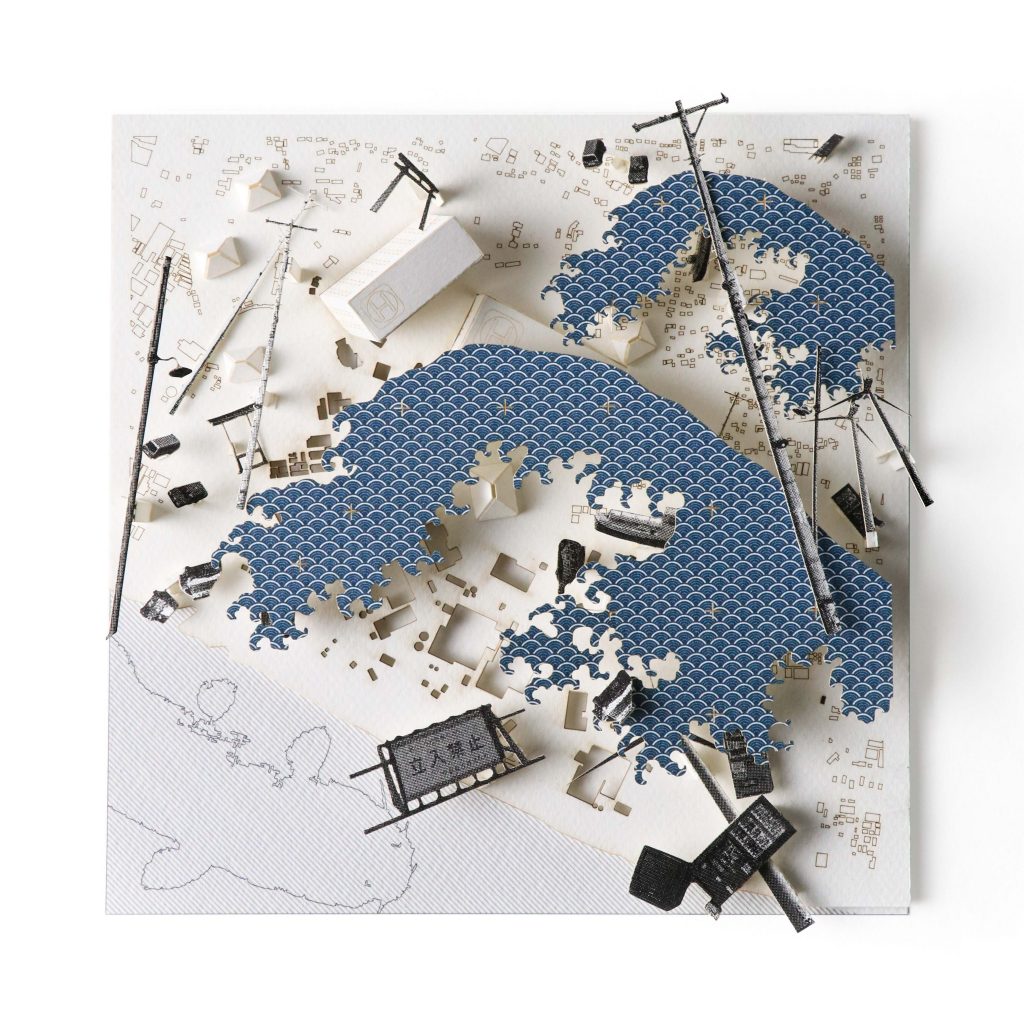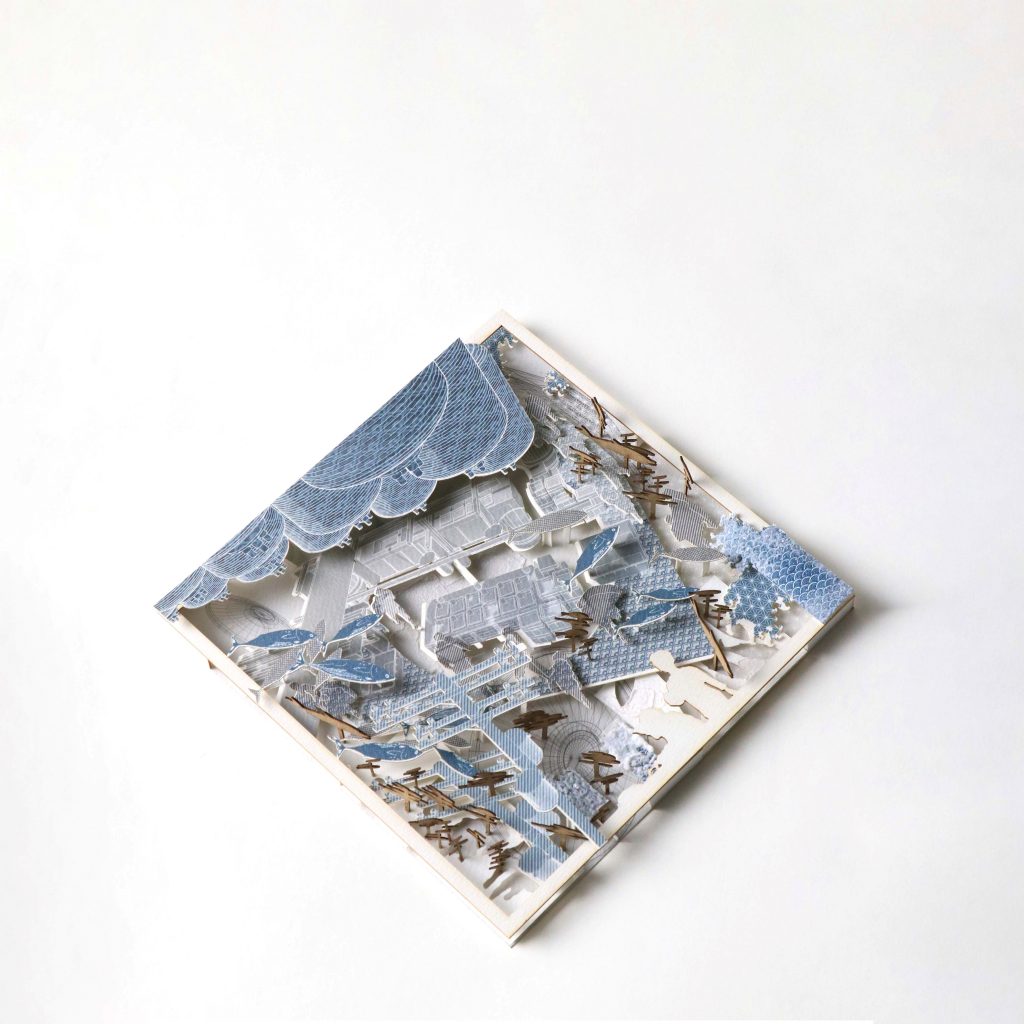Winners of the 2024 Marco Frascari Prize in Architecture for Drawing
April 24, 2024
Six Master of Architecture thesis students at the Azrieli School of Architecture & Urbanism have received awards in the 2024 Marco Frascari Prize in Architecture for Drawing.
Alejandra Leon de Gante won the $4,000 First Prize for a series of drawings on the ecological damage caused by the Mezcal industry in Oaxaca, Mexico.
Lauren Liebe was awarded the $2,500 Second Prize for drawings that explore the journey of salmon within the context of industrial salmon canning.
The following four students received a $1,000 Honourable Mention.
Madelyn Byrtus mapped Ottawa’s downtown capturing spaces a woman may frequent to escape a particular circumstance at home.
Lauren Daniels studied her grandparents’ cottage through hand drawing, exploring how different methods can capture the atmospheric qualities of a place.
Michael Fiel Mandac narrates a fictional story set in 2050 rural Japan, speculating on the replacement of nuclear energy.
Harrison Lane plotted the arch of an architectural pedagogy predicated on joy that resists.
The selection committee comprised Adjunct Professor Adriana Ross, Visiting Scholar Fiona Lim Tung, and Instructor Eliza Pertigkiozoglou. Professor Federica Goffi served as chair.
The 2024 competition invited students to use hybrid drawings combining digital and hand work, as demonstrations offering “clues” of adaptability in architecture and plural storytelling(s) of sites whose stories are in the making.
“Adaptability can have a retrospective and prospective quality,” said the call. “We can convert existing buildings to new uses or construct new buildings and details with a propensity for future adaptations.”
Recipients must have demonstrated excellence in the practice of hand drawing and have developed a critical understanding of the craft and role of drawing in architecture.
The competition was organized by Assistant Professor Piper Bernbaum.
First Prize ($4,000)
Alejandra Leon de Gante



This thesis explores regenerative materials and earth construction in marginalized Oaxaca, Mexico. The Mezcal industry – which has exploded in recent years due to celebrity-fueled popularity – is causing serious ecological damage due to industrial-scale monoculture and the improper disposal of its plant-based by-products bagasso and viñaza. Used in combination, however, these alternative materials can activate circular modes of construction and economies, giving agency to vulnerable sectors of the population while responding to the global ecological crisis. To destigmatize earth construction, the design portion of this thesis proposes a centre for research, education, fabrication, and innovation for Mezcal’s regenerative by-products.
Jury Comments: The jury appreciated the use of regenerative materials and earth construction in Oaxaca, Mexico. The project proposes a research and education centre that draws attention to the ecological damage brought by industrialization and raises awareness of the opportunity to use natural materials such as earth construction. The hybrid drawing technique narrates the story of the project with clarity. The quality of the craft, the choice of scales, line quality, and materials are excellent.
Second Prize ($2,500)
Lauren Liebe



These drawings explore the main thresholds that salmon experience in industrial salmon canning architecture and their incredible journey in spawning. With a focus on the Skeena River, these migration routes are outlined on a historic map for canneries of the North Pacific. While the fish journey may end at the point on this map, I have added a hand-drawing of the estuaries of the Skeena to show how much farther salmon are meant to swim, when the original map extends only to the point they are captured at the mouths of rivers.
Jury Comments: The hybrid representation technique chosen – printmaking and the use of layering and transparency are successful and work well with the narrative, conveying the character of an unfinished story with its roots embedded in the 19th century. The project draws attention to other-than-human species and, particularly, the migration routes of salmon in the Pacific Northwest. Printmaking is used as a critical medium to highlight the threat of extinction and narrate the historical conditions that lead to environmental contamination due to the relentless work of the fishing industry.
Honourable Mention ($1,000)
Tracing My Movement Through the City
Madelyn Byrtus

This mapping exercise of Ottawa’s downtown captures some of the types of spaces a woman may frequent to escape a particular circumstance at home, including needing space from a difficult roommate or partner, experiencing feelings of isolation, or fleeing violence. Coloured on the map are building footprints that reflect spaces for informal respite such as cafés, libraries, parks, gyms, and children’s playgroups. Recordings were taken of my movement through Ottawa’s downtown with needle and thread overtop these locations. This information combined shows safe and efficient routes through the city by walking, cycling or bus.
Jury Comments: The jury awarded an honourable mention to this project for the capacity to narrate through hybrid drawings the effects of physical partner violence on a female survivor, conveying their sense of memory and how such memories affect their sense of place in relation to trauma.
Honourable Mention ($1,000)
Interior Materials
Lauren Daniels

In adaptation, retrospection is vital for a sensitive intervention. Hand drawing fosters retrospection through enhancing attunement to both tangible and intangible aspects of place. My thesis, Drawing Out Atmosphere: Attunement to Environment Through Hand Drawing, explores the values of hand drawing in the context of the digital age. Studying my grandparents’ cottage through hand drawing, I explore how different drawing methods can capture the atmospheric qualities of a place. This drawing layers the original hand-drafted drawings with as-found materials to express the detail intentions for restoration.
Jury Comments: This submission received an honourable mention for the capacity of the author to offer a compelling narrative about adaptability, making time visible through hand drawing and the hybrid collage of multiple perspectives and viewpoints overlaid onto each other through transparency. The author provided a convincing description of the capacity of hand drawing to serve as a method for learning.
Honourable Mention ($1,000)
Harrison Lane

This image plots the arch of an architectural pedagogy predicated on joy that resists. Each section corresponds to a course, with individual elements relating to lecture content, themes of the course, or possible responses to assignments.
Jury Comments: The jury recognized the ability of the author of this drawing to play between types of drawn representation and types of scales, recognizing the link that potentially exists between disparate projects over a long arc of time.
Honourable Mention ($1,000)
Michael Fiel Mandac



Drawing on the Fukushima nuclear accident in 2011, the narrative speculates on the replacement of nuclear energy with alternative energy through saltwater battery technology. The story explores implications of salt batteries within a larger interconnected background of Japanese culture and belief, and energy and environmental issues. It follows the conflict between an executive part of a greedy energy cartel and the young grandson of a local fisherman, aided by a mythical fox. The panels incorporate grown salt crystals onto specific pieces of the composition, combining collage and layering with digital fabrication methods.
Jury Comments: This submission was commended for the innovative way of thinking about what a hand drawing could be: a two-and-a-half dimensions drawing. By drawing lines with scissors and narrating a fictional story set in 2050 rural Japan, the author invites you to inhabit the space of the drawing, generating curiosity and an opportunity for exploration.
About the Marco Frascari Prize in Architecture
Dr. David Azrieli endowed the prize in 2013 in memory of Dr. Marco Frascari, who served as director of the Azrieli School of Architecture & Urbanism from 2005 until his death in 2013.
The annual drawing competition is open to graduate or post-graduate students who have completed at least one year of their program. The programs include Master of Architecture (two-year and three-year programs) Master of Architectural Studies, PhD in Architecture, and Graduate Diploma in Architectural Conservation.